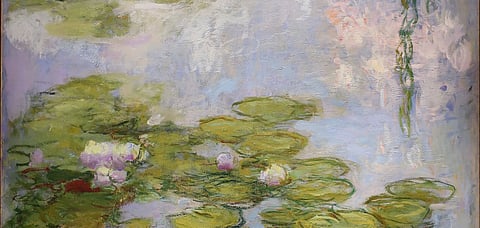

They say a picture is worth a thousand words. I don't believe in cliches, so I seek out those that inspire no words, just leave everyone speechless. The ones that immerse a person in the colours, strokes, elements and most of all landscapes. The most enchanting views on paintings are those that are plucked right out of reality and woven into a silent story. These iconic paintings were inspired locations that you can visit in real-time
Where Le Cafe la Nuit, Arles, France
A street cafe bathing in warm yellow lights on a cobbled street Van Gogh's Cafe Terrace at Night paints a serene image of a social setting in the dark hours of the night. The real cafe that inspired the painting is a more lively one then the brushstrokes credit, a lively cafe called Le Cafe la Nuit in Arles, France. Though made popular by the painting, the cafe is not regarded as a value-for-money venture and has garnered many negative reviews online. However, do not discount the city. Arles is a cultural hotspot, definitely worth a visit.
Where Giverny, France
In an impressive collection of around 250 paintings of water lilies that Claude Monet painted, this one with the definitive name has garnered international recognition like no other. And why not The simplicity and elegance of the painting almost inspires poetry. The real location that served as the muse in Giverny, France is known to have enamoured Monet on a trip. He is said to have rented a home nearby to observe the surroundings and extend it to a canvas.
Where Ile de La Grande Jatte, France
A masterpiece in the technique of pointillism, the painting shares a day of recreation at the park we have all either indulged in or dreamt of. While it is meant to be a commentary on the upper class of society, a look at it inspires a wish to sprawl on the green lawns overlooking the slow river. The landscape has been plucked out of the real island of La Grande Jatte in Paris. The river in the painting is River Seine, following which you can travel to the Notre Dame.
Where Canterbury Province, New Zealand
The almost animated image gives a very two-dimensional feel on first impression. Iconic nonetheless, Cass by Rita Angus shows Cass railway station in New Zealand with a sparsely active surrounding in the fore of steep hills. The lack of human elements (only one man is depicted) in the picture gives it a strange loneliness, throwing the burden of personality on the inanimate objects. The station was visited by Rita Angus and fellow artist Louise Henderson in 1936.
Where Yosemite National Park, California, USA
The name does not hold any mystery to what place has been depicted in the painting. A wide view of Yosemite National Park in the USA, it frames golden sun rays slithering onto the gigantic rocks of the area. A devastatingly scenic landscape, the picture makes one want to jump in and experience it in person. And you can, as long as you book a plane ticket to California and struggle through the visa procedures.
Where Oslo, Norway
One of the most popular paintings to be appreciated and turned into endless parodies, The Scream holds immense cultural significance. Obviously the element of chaos is apparent in the screaming figure that dominates the foreground of the painting but also extends to the fluid skies hovering above. The inspiration came to Munch as he was on the fjord in Oslo and thought he sensed an "infinite scream passing through nature". While the painting is an account of anxiety in the modern man, I think it's safe to assume that a visit to Oslo's green parks and urban cityscape might have the opposite effect.
Where Cushing, Maine
The feeling of yearning and helplessness hangs in the air as one looks at the lone torso of a woman in the painting. Anna Christina Olson was the muse, a patient thought to suffer Charcot-Marie-Tooth disease. Set on the lawns outside the Olson House in Cushing, Maine, the painting is one of the best works of Wyeth. The house has been restored to match the original painting.
